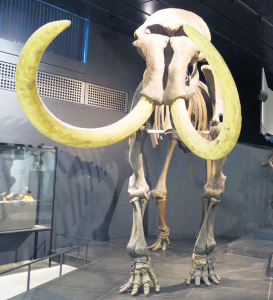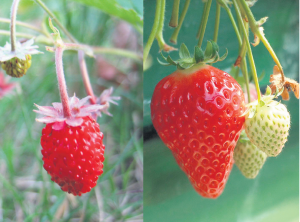FRIDAY, 27 APRIL 2012
The decade since the publication of the human genome sequence has seen an explosion in the sequencing of genomes. Prior to its release in 2001 only 42 other genomes, mostly of low complexity, had been sequenced, and of these only 4 were non-bacterial. As of 2011 this number is over 60 times higher, with over 250 non-bacterial genomes now available, including dog, mouse and chimpanzee.The publicly funded Human Genome Project (HGP) took 10 years to complete, at a cost of $400 million. In 2000, US President Clinton announced that the publication of the human genome “will revolutionize the diagnosis, prevention, and treatment of most, if not all, human diseases.” A year prior to that Dr Francis Collins, who led the public effort, predicted that within a decade patients would be able to undertake prophylactic drug regimes based on predictive genetic tests. Understandably, such bold claims generated great anticipation and heralded the dawning of a new medical era.
Ten years on, there is a definite feeling of public disappointment; Matt Ridley, of the Wall Street Journal, wrote disparagingly that “genomics has always been sold as a medical story, yet it keeps underdelivering useful medical knowledge.” Collins has also conceded that the genome has not yet yielded as many clinical successes as predicted. A group of researchers in Switzerland even argue that in hindsight, the HGP could be described as an economic ‘social bubble’ where investment far outstrips any rational expectation of financial return.
With severe austerity measures in place globally and subsequent science funding cuts, we might ask if continued genome sequencing is of value—or are we merely embarking on more ‘bubbles’? 2011 saw the publication of both the wild strawberry and naked mole rat genomes, whilst the genomes of the woolly mammoth and South American opossum were published in 2008 and 2007 respectively. How do such obscure genomes benefit society or science?
Continued sequencing has driven revolutions in sequencing technology. When the HGP started in 1990, traditional techniques could read up to 25,000 DNA bases—the subunits that make up our DNA—in a week; at its conclusion this had increased to a dramatic 5 million bases. Current next-generation sequencing techniques, which were used to assemble the wild strawberry genome, can now sequence an astounding 250 billion bases per week with a simultaneous 100,000 fold decrease in cost. However, these developments have brought other hurdles with them. Assembling an unknown genome is like putting together a jigsaw puzzle without being able to see the picture on the box. If the HGP was a 100-piece puzzle then the new projects are 1000-piece puzzles—the pieces are more numerous and a lot smaller, making it harder to put them together. Naturally, as more genomes are published, the easier assembly will become with the availability of similar ‘reference genomes’. The wild strawberry provides a basis for genomes of commercially important crops of the same family, including peaches and cherries. It will also aid sequencing of commercial strawberries which, like many crops, has been severely inbred and possesses several genome copies each—making sequence assembly even harder.
Despite many readily available plant genomes, crop breeding has not been able to take advantage of the genomic revolution. Traditionally, traits that improve crops are difficult to breed in from wild varieties, and it can take up to 10 years of crossing to gain desired traits and breed out unwanted ‘wild’ characteristics. Fortunately, this is set to change with a recent study published in Nature Biotechnology. To speed up the process, researchers made use of both the rice genome reference, published in 2005, and the new, quicker sequencing techniques. They were able to take a natural rice strain and mutate it, causing random changes within the genome that changed the plant’s characteristics. They were able to find exactly where the mutations occur by re-sequencing new plants and comparing their results to the reference genome. They created the ‘MutMap’, which maps mutations with different plant features. This aids the tracking of characteristics during breeding and thus reduces breeding times to one year. It is already being used to breed more salt-resistant rice strains for growth in Japanese paddy fields affected by salt water from the 2011 tsunami.
Plant genomes are not alone in benefiting science and society. Methods for handling ancient DNA through sequencing the pre-historic woolly mammoth helped with the sequencing of the Neanderthal genome, which could give us an idea of what it is that makes us human. Other non-human genomes also helped in the two to three years following the human genome publication. At the time it was only 90 per cent complete and filling in the gaps was difficult; however comparing sequences with other mammals significantly helped complete it. Today, comparative genomics can suggest a gene’s function. For example, researchers at the Babraham Institute have used genomes from marsupials, which have primitive placentas, and compared them to the human genome to identify factors important in the growth of a developing placenta. Moreover, as many mammals suffer from the same diseases as humans, having multiple genomes to compare will be invaluable. In this light, it is hoped that the naked mole rat will help us understand ageing.
Despite the perpetrated “under deliverance” of the HGP, it has still fuelled the discovery of more than 1,800 disease genes and over 2,000 genetic tests are available. A map similar to the ‘MutMap’ called the ‘HapMap’ has also been created, mapping all human mutations and is indispensable in identifying disease-causing genes. In the late 1980s, the gene and mutation associated with cystic fibrosis took many years and $50 million to find; nowadays with the genome and ‘HapMap’ it could take mere months.
The first law of technology states we invariably overestimate the short-term impacts of new technologies and underestimate their longer-term effects. This is undoubtedly true for genomics. The last decade has perhaps seen more genomes published than medical cures, but the technology and reference genomes gained through international collaboration will certainly yield huge social and academic benefits in the coming decades.
Nicola Stead is a 4th year PhD student at the Babraham Institute



